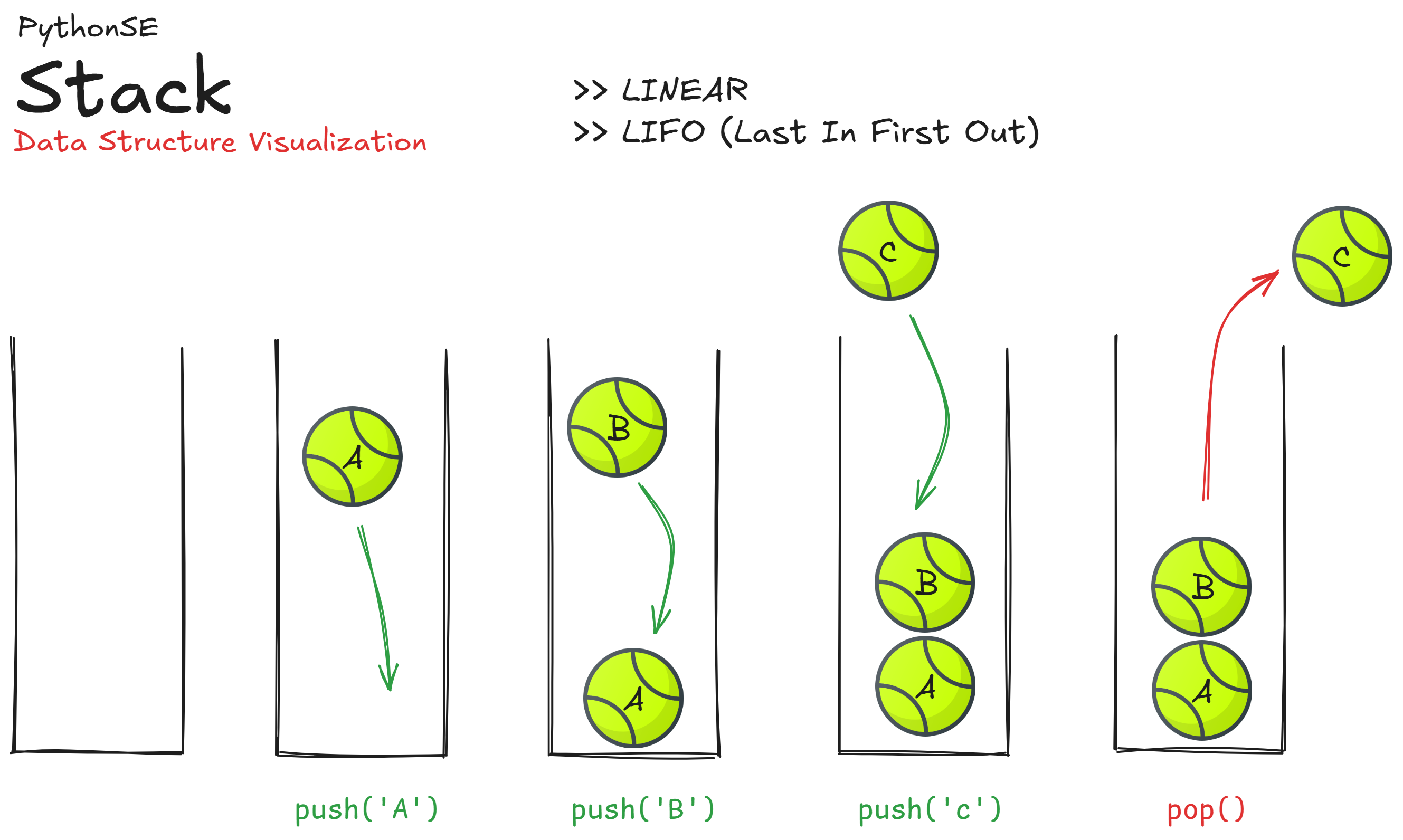[Python SE] How does a stack work?
11/01/25 - #softwareengineering #pyhton #stacks

A stack is a linear data structure that follows the Last In, First Out (LIFO) principle. It can be thought of as a a tube that holds tennis balls. Each time you place a ball into the tube, it goes on top of the previous one. When you want to remove a ball, the only one you can access is the last one that was added, the ball on the top.

Common Operations on a Stack:
- Push: Adding an element to the top of the stack.
- Pop: Removing the top element from the stack.
- Peek: Viewing the top element without removing it.
- IsEmpty: Checking if the stack has any elements.
Stacks are commonly used in scenarios like parsing expressions, managing function calls (think recursion), and implementing undo mechanisms in software.
Implementation
In Python, stacks can be implemented in a number of ways, including using lists or the collections.deque class. Here is a self-explainatory implementation:
class Stack:
def __init__(self):
"""
Initializes an empty stack.
"""
self._items = []
def push(self, item):
"""
Adds an item to the top of the stack.
:param item: Item to be added to the stack.
"""
self._items.append(item)
def pop(self):
"""
Removes and returns the item from the top of the stack.
:return: The top item of the stack.
:raises IndexError: If the stack is empty when trying to pop.
"""
if self.is_empty():
raise IndexError("Pop from an empty stack")
return self._items.pop()
def peek(self):
"""
Returns the item from the top of the stack without removing it.
:return: The top item of the stack.
:raises IndexError: If the stack is empty when trying to peek.
"""
if self.is_empty():
raise IndexError("Peek from an empty stack")
return self._items[-1]
def is_empty(self):
"""
Checks if the stack is empty.
:return: True if the stack is empty, False otherwise.
"""
return len(self._items) == 0
def size(self):
"""
Returns the number of items in the stack.
:return: The size of the stack.
"""
return len(self._items)
# Example usage
if __name__ == "__main__":
print("Create a new stack")
stack = Stack()
print("Push 'A', 'B', and 'C' in the stack")
stack.push("A")
stack.push("B")
stack.push("C")
print(f"Top item: {stack.peek()}") # Output: Top item: C
print(f"Stack size: {stack.size()}") # Output: Stack size: 3
stack.pop()
print(f"Top item after pop: {stack.peek()}") # Output: Top item after pop: B